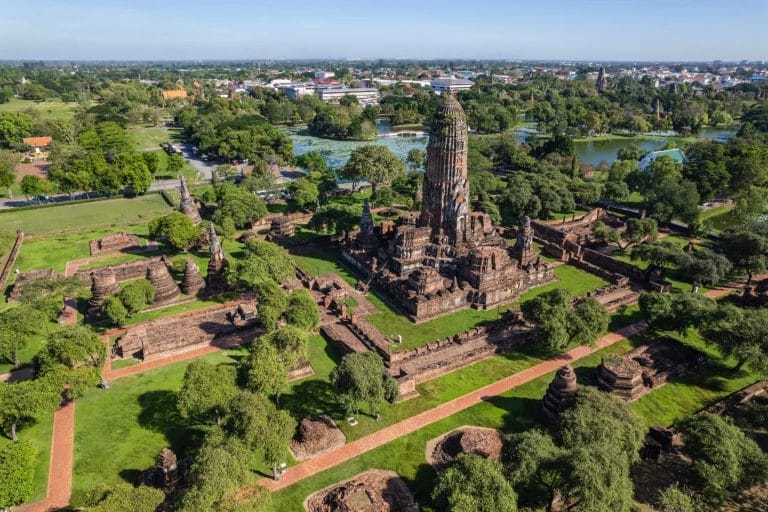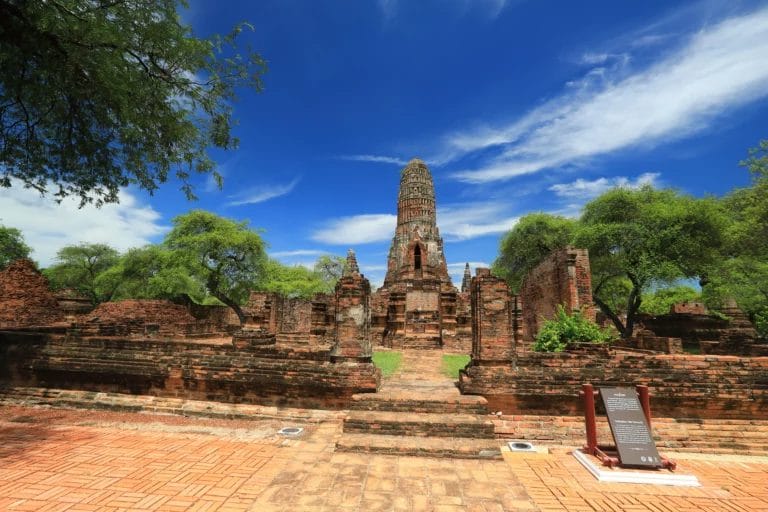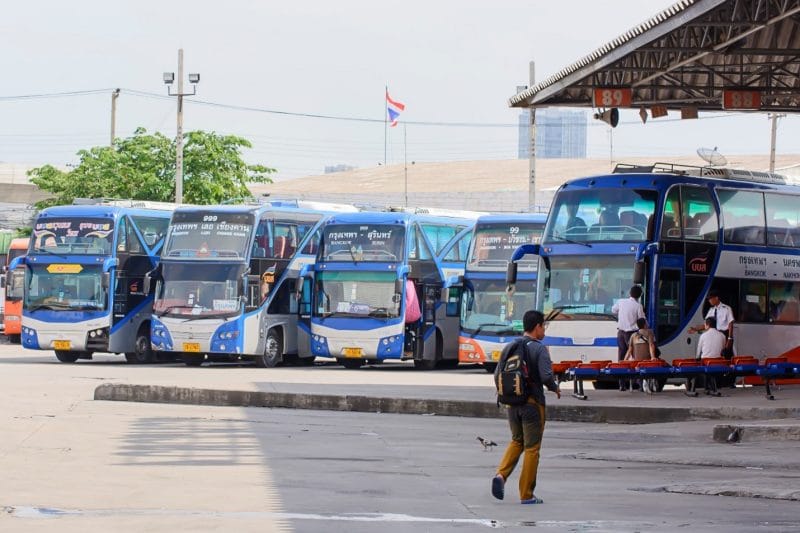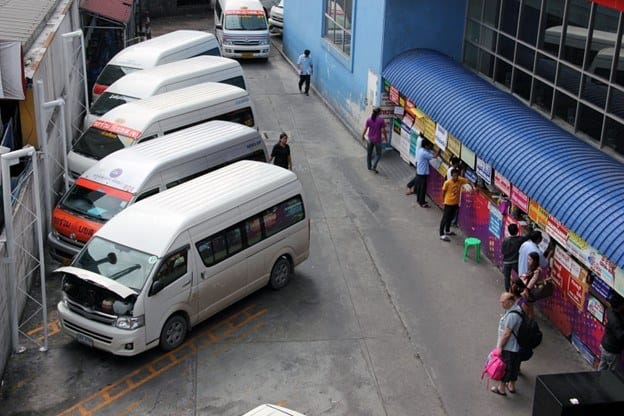
What is Ayutthaya Historical Park?
Ayutthaya, a UNESCO World Heritage Site, is a captivating destination boasting numerous ancient temples that leave visitors in awe. When exploring Thailand, a trip to Ayutthaya, alongside the historical park of Sukhothai, is an absolute must for any enthusiast of archaeological wonders.
From 1350 to 1767, Ayutthaya served as the capital of Siam, the former name of Thailand. Situated just 90 kilometers north of Bangkok, this city was once the wealthiest in the world during the 16th and 17th centuries.
Its opulence and grandeur astounded merchants and visitors alike, establishing it as a vital trading hub in Asia. Ayutthaya even engaged in diplomatic exchanges with the Mughal Court in Delhi, the French Court at Versailles, and Japan.
Prince U Thong, a Thai noble, founded Ayutthaya in 1350 and declared it the capital of his kingdom. The city’s official name, Phra Nakhom Sri Ayutthaya, translates to the Holy City of Ayutthaya, inspired by the capital city of Rama, a Hindu deity depicted in the Indian epic Ramayana.
At its peak, Ayutthaya housed 400 temples and three magnificent palaces, all enclosed within a formidable 12-kilometer stone wall. Positioned amidst the Chaophraya, Pa Sak, and Lopburi rivers, Ayutthaya enjoyed the advantages of strategic transport links and a reliable water supply.
The Burmese invasion of 1767 marked the downfall of the Ayutthaya Kingdom, as they mercilessly razed the city of Ayutthaya to the ground. The raid destroyed countless artifacts consumed by the flames or looted by the Burmese invaders. Among the highly coveted treasures were the revered golden Buddha statues, frequently spirited away to Burma.
The extensive scale of the devastation inflicted upon Ayutthaya ultimately spelled the demise of the once-thriving kingdom. However, the Siamese salvaged a few precious artifacts and transported them to Thonburi, now recognized as Bangkok.

Where is Ayutthaya Historical Park?
Ayutthaya, situated in the Phra Nakhon Si Ayutthaya District of the Phra Nakhon Si Ayutthaya Province, covers an area of 289 hectares as a World Heritage property.
Once a significant global diplomacy and trade hub, Ayutthaya now stands as an archaeological site, showcasing the remnants of towering prang (reliquary towers) and grand Buddhist monasteries. These remnants provide a glimpse into the city’s former vastness and the magnificence of its architectural achievements.
Ayutthaya’s layout, meticulously documented in contemporary sources and maps, followed a systematic and rigid city planning grid. This grid encompassed roads, canals, and moats surrounding the principal structures. The design made optimal use of the city’s strategic position amidst three rivers and boasted an exceptionally advanced and unparalleled hydraulic system for water management.
Why should you go to see Ayutthaya Historical Park?
In 1991, a portion of Ayutthaya Historical Park was designated as a UNESCO World Heritage Site based on criteria III, recognizing it as a remarkable testament to the era of significant cultural and artistic development in Thailand. The designated area encompassed only 289 hectares, specifically Ayutthaya Island’s central and southwestern parts. As a result, only specific clusters of historical sites fall under the protection of UNESCO.
These sites include Wat Ratchaburana, Wat Mahathat, Wat Phra Sri Sanphet, Wat Phra Ram, and Wiharn Phra Mongkhon Bopit.
Other historical sites include Wat Yai Chai Mongkon, Wat Phanan Choeng, Wat Chaiwatthanaram, and Wat Phu Khao Thong, located beyond Ayutthaya Island, which is not part of the UNESCO World Heritage sites. Here is why you should add Ayutthaya to your Thailand itinerary:

• Phra Nakhon Sri Ayutthaya Historic Park
In the heart of Ayutthaya City lies the Phra Nakhon Si Ayutthaya Historical Park, a remarkable UNESCO World Heritage site that captivates visitors with its abundant attractions. This park’s remnants of ancient structures are meticulously restored to their former glory and recognized by UNESCO as significant World Heritage sites.
The architectural splendor of Ayutthaya showcases a captivating blend of Khmer and early Sukhothai styles. Notably, there are cactus-shaped obelisks known as prangs, which bear the influence of Khmer architecture and resemble the iconic towers of Angkor Wat.
Additionally, the more pointed stupas are attributed to the Sukhothai legacy, adding further intrigue to the landscape.

• Chao Sam Phraya National Museum
The Chao Sam Phraya Museum houses a remarkable assortment of artifacts discovered in the ancient ruins of Ayutthaya. Its establishment was intended to provide a dedicated space for preserving and exhibiting the invaluable treasures unearthed from the towers of two prominent temples: Wat Ratchaburana and Wat Mahathat.
Since their inauguration in 1961, these priceless relics have captivated the public as the museum’s main attraction, offering a first-time glimpse into their historical significance.
Each of the two temples is honored with its dedicated room within the museum, where the artifacts unearthed from their respective crypts are thoughtfully showcased alongside interpretive displays. Among the treasures are relics of Buddha, exquisite jewelry, intricate gold-made gifts, and votive tablets.
The sculptures discovered bear the distinct Ayutthaya style, a unique and captivating artistic expression that sets it apart from the Sukhothai period. Crafted primarily from stone, bronze, and terracotta, these sculptures and images represent a fascinating journey through the region’s rich artistic heritage.
One particularly striking sculpture adorning the museum is a grand bronze head of the Buddha, discovered at Wat Thammikarat. Over the years, the museum’s collection has grown to encompass a broader range of items, including ornate wooden gables and doors from the temples, exquisite ceramics, painted cloths, and various other artworks.

• Wat Phra Ram
Located 500 meters north of the national museum, Wat Phra Ram has a rich history dating back to the 14th century.
Originally constructed during the early years of King Ramesuan’s reign, the temple was restored a century later. Its origins can be traced to where King U-thong, King Ramesuan’s father, was cremated.
Although King Ramesuan’s rule lasted only a year, it is believed that the temple’s construction was completed either during the reign of the subsequent king, King Racharhirat I, or when King Ramesuan ascended to the throne for the second time, two decades later.
At the heart of Wat Phra Ram lies a prominent prang adorned with small ornamental chedis. Remarkably, some original decorations have withstood the test of time, including depictions of Garuda, Naga, and Buddha.
Adjacent to the temple, on the opposite side, you’ll find a verdant park encompassing Bung Phra Ram, a picturesque lake. Within the lake, three islands host the ruins of various chedis, adding to the allure of the surroundings.

• Wat Mahathat
Wat Mahathat, located on the northeastern shore of the lake, is believed to have been constructed in 1384 during the reign of King Ramesuan. Initially a modest temple, King Ramesuan later expanded the site, creating a grand structure. As a monk, he frequented this temple, balancing his spiritual duties with his responsibilities as a monarch.
The original prang, standing at a towering height of 46 meters, suffered a collapse. However, two hundred years later, the prang was reconstructed and now stands at its current height of 50 meters.
Numerous remarkable artifacts were discovered during an excavation by the Fine Arts Department. Among these treasures were a sacred relic of the Buddha, golden Buddha images, and other valuable items crafted from ruby, gold, and crystal. These precious artifacts are now proudly exhibited at the National Museum in Bangkok.

One of the most intriguing sights within the Ayutthaya historical park is an awe-inspiring head sculpture of the Buddha, entwined with tree roots over time. This captivating fusion of nature and spirituality has earned it the reputation of being the most photographed image of Ayutthaya

• Wat Ratchaburana
Erected in 1424 under the patronage of King Borommarachathirat II, the seventh ruler of Ayutthaya, this temple and its towering prang holds a poignant tale. King Borommarachathirat II built the temple to commemorate his two elder brothers, who tragically perished while engaging in a fateful duel for the throne. Their remains find their eternal resting place within the twin-chedi, symbolizing their unity in death.
In 1958, archaeologists made an astounding discovery within the temple precincts, unearthing a trove of invaluable artifacts. Among the finds were regal adornments, including crown jewels, ornate jewelry, and Buddha images.
The central prang of Wat Ratchaburana, one of the finest-preserved structures in Ayutthaya, sheltered these magnificent treasures, unrivaled in their significance to the city’s history.
Explorations within the prang led to the revelation of a hidden crypt, unveiling three distinct levels. The first level, adorned with vivid murals, housed tablets belonging to commoners, which offered a glimpse into the lives of ordinary people.
At the second level, visitors find themselves in the presence of royal artifacts, including golden tablets, illuminating the opulence of Ayutthaya’s monarchy.
The third level was intended to safeguard the relics of the Buddha. However, most of these were stolen, leaving a void where priceless items once resided. Nevertheless, many treasures were recovered and exhibited at the Chao Sam Phraya National Museum.
To access the crypt within the prang, one must ascend a staircase leading to a sight of faded frescoes that recount stories lost over time.

• Wat Phra Si Sanphet
Constructed in 1448 and restored twice, this royal temple holds immense historical significance. King Rama Thibodi II commissioned a magnificent 16-meter-tall Buddha statue adorned with a generous layer of gold, weighing approximately 170 kg.
Tragically, the Burmese invaders set fire to the sculpture, melting away its golden exterior and causing the destruction of both the statue and the temple.
However, three majestic chedi structures from the 18th century still stand as a testament to Ayutthaya’s glorious past. These chedis were erected to house the remains of three esteemed kings and were skillfully renovated in 1956, showcasing the distinctive architectural style of Ayutthaya. This temple is a wonderful historical site and has held deep spiritual significance for the Thai people throughout the ages.
Nestled within the royal palace grounds, Wat Phra Si Sanphet serves as the royal monastery and does not accommodate any resident monks. Nonetheless, the temple was crucial in hosting significant ceremonial events within the royal court, including the oath-taking ritual to express loyalty and allegiance.
When is the best time to visit Ayutthaya Historical Park?
The ideal time to visit Ayutthaya in Thailand is from November to January when the rainfall is significantly reduced, and the weather is pleasant. Ayutthaya experiences hot and humid conditions throughout the year, even during the winter months of December and January.
During a day tour, it is essential to stay well hydrated due to temperatures remaining in the thirties. January is the busiest month, resulting in slightly higher hotel prices and other accommodation if you plan to stay overnight.
On the other hand, April is not a popular time for tourists to visit Ayutthaya. In late March and April, temperatures often soar to 45°C (113°F). But if the intense heat is not a concern for you, this time of year can be great to visit as there are fewer crowds on the streets, and accommodation is more budget friendly. From June to September, the weather is stormy, making sightseeing challenging, so this period is considered the offseason.
How to get to Ayutthaya
• By Train
Ayutthaya and Bangkok are closely linked by train travel. Trains depart from Bangkok’s Hualamphong station at least once every hour.
The journey duration varies between 1½ to 2 hours, depending on the type of service chosen. The fare for the express service is 66 baht (~ 2 USD) for first class, 35 baht (~ 1 USD) for second class, and 15 baht (~ 0.50 USD) for third class.
The Ayutthaya train station is located just east of the island. You can take a ferry across the Pa Sak River from the pier, across the main road from the train station to the ruins.
The Ayutthaya Historical Park is a mere 5-minute Tuk-Tuk ride away from the train station in Ayutthaya.

• By Bus
The bus journey to Ayutthaya starts at Mo Chit, the Northern Bus terminal in Bangkok, and arrives at Thanon Naresuan, situated approximately one kilometer East of the prominent landmarks.
The travel time for this trip is precisely 1½ to 2 hours, with a fare of 60 baht (~ 2 USD).

• By Minivan
- The fastest way to reach Ayutthaya is by taking a minivan from Bangkok. The minivans depart from two locations: Khao Sarn Road, where the fare is approximately 300 THB (~8 USD) for a one-way trip, and Mo Chit Bus Terminal, where the fare is around 100 THB (~3 USD) for a one-way trip. Upon arrival at Ayutthaya’s Southern Bus Terminal, which is just a 4 to 5-minute Tuk-Tuk ride away to the Ayutthaya Historical Park, passengers will be dropped off. The travel time by minivan is approximately 2 hours.








4 Responses
Hi there, this is an outstanding review of Ayutthaya Park, which I know and love. As far as I can see, you’ve thought of everything a visitor would need to thoroughly enjoy and benefit from visiting this historic site. Speaking as a lifelong Buddhist, I love explaining things about Buddhist ilk.
Beautiful Photographs and attractive presentation, too. The authenticity of your post really shines through.
Blessings and Success.
Linden
PS: I’m afraid the top navigation menu isn’t working well, and I would love to look at all your other pages!!
Hi Linden, thank you so much for your kind words and blessings! I’m happy to hear that you enjoyed my article of Ayutthaya Historical Park! I’m glad to know that I was able to capture the essence of the park and provide useful information.
As a lifelong Buddhist, your perspective and insights into the site’s cultural and spiritual significance are invaluable. I appreciate your appreciation for the authenticity of my post. By the way, sorry to hear that you experienced the issue with the top navigation menu. However, thank you to let me know, and I’ll take a look at it. You may try to check on my site again at https://journeyinthailand.com/#destination. You’ll be able to see all my other posts under “Destinations”. Please let me know if you still experience the issue. Thank you again for taking the time to share your thoughts and visiting my website.
Blessing and best wishes to you as well!
Benjamas
Dear Benjamas,
Your post on the Ayutthaya Historical Park has left me intrigued and inspired to visit. Although I haven’t had the chance to experience it firsthand, your vivid descriptions and stunning photographs have transported me to this captivating historical site. The practical tips and recommendations you provided have piqued my interest even further. I can’t wait to explore the Ayutthaya Historical Park and immerse myself in Thailand’s rich history and cultural heritage.
Thank you for sharing this incredible destination!
Marios
Dear Mario,
Thank you so much for your kind words! I’m happy to hear that my post on the Ayutthaya Historical Park has sparked your interest and inspired you to consider visiting. It truly is a remarkable place filled with rich history and cultural significance.
I’m glad you found the descriptions and photographs immersive and helpful in envisioning the experience. When you do get the chance to explore Ayutthaya, I’m sure you’ll be captivated by its beauty and the sense of history that surrounds you.
If you have any questions or need further recommendations as you plan your trip, feel free to reach out. I’m always here to help! Safe travels and enjoy your adventure in Thailand’s fascinating past.
Thank you again!
Benjamas